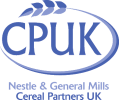On Monday, Chancellor Philip Hammond delivered his last pre-Brexit Autumn 2018 Budget, announcing a number of reliefs and spending pledges, largely welcomed by many of the UK’s business leaders.
Among the policies Hammond announced were:
- A five-fold increase in the Annual Investment Allowance from £200,000 to £1 million to help businesses to invest and grow
- Tax breaks to encourage businesses to invest more in factories, offices and other places of work;
- £1.6 billion for R&D to promote science and tech innovation
- A series of measures relating to the British Business Bank (BBB), namely a continued commitment to its business Start Up Loans programme and a guaranteed £1 billion in support for smaller housebuilders, to be deployed under the BBB’s ENABLE Guarantees Programme
There had also been speculation on potential changes to the VAT registration threshold, which stays frozen at £83,000 for the next 2 years. There was however a hint at likely VAT regime changes once the UK leaves the EU.
So, what is the Annual Investment Allowance (AIA)?
Introduced in 2008, it allows qualifying expenditure on plant, machinery, integral features of a building and some fixtures and fittings up to the AIA limit to be 100% offset against business income in the year the expenditure occurs.
The commitment to increasing the annual investment allowance (AIA) from £200,000 to £1 million for two years is designed to provide extra tax relief to firms who invest in business machinery and equipment.
It is also a long-standing request of the British Chambers of Commerce, with its director general, Adam Marshall commenting that the budget has ‘sent important and positive signals to businesses across the UK, many of whom have been wavering on investment and hiring.’
Available from 1 January 2019 to 31 December 2020, and part of the government’s aim to ‘stimulate business investment’, it is particularly key to industries with a high investment in large scale equipment, such as manufacturing, engineering, agricultural, haulage and renewable energy sectors.
What equipment is included in the AIA?
It’s worth noting that while the qualifying expenditure extends to most assets purchased by businesses, there are some exceptions.
Typically, eligible assets may include:
- Plant and machinery
- Computers, hardware and (qualifying) software, office furniture and office equipment
- Business machinery e.g. printing presses, lathes, manufacturing and tooling equipment
- Agricultural machines including tractors, combine harvesters and other machinery
- Heavy duty vehicles such as vans, lorries, trucks, cranes and diggers
- Integral building fixtures e.g. electrical systems, air conditioning, lifts and escalators
- Fibre optic cabling and wind machines
- Driving school vehicles
There are also some asset types that are not permitted under the allowance, for example, whilst the AIA applies to hire purchase, it does not cover lease-based assets.
Transitional Provisions
For businesses that operate a financial year which spans the introduction of the increased AIA, it is important to note that transitional provisions mean that they may claim a proportionate amount of the increase in allowance, depending on when their financial year end falls.
For example, where a business has a financial year which runs from 1 July 2018 to 30 June 2019, the business would be able to claim a total AIA of £600,000, consisting of £100,000 for period of 1July 2018 to 31 December 2018 (half the current AIA limit, as one half of the period elapsed during the current AIA rules ), and £500,000 for period 01 January 2019 to 30 June 2019 (half the revised AIA limit, as the other half of their financial year elapsed during the revised rules)
For businesses planning to invest more than £1 million, the additional amount would qualify for 18% relief (8% if integral building feature). For accounting periods which end prior to January 2019, the £200,000 AIA limit will apply.
This does not constitute legal or tax advice and we would encourage you to seek independent advice for clarity on eligibility equipment and/or claiming relief under the allowance.
How finance can help
If you are considering investment in new business equipment to take advantage of the rise in the investment limit, and to take your business to the next level, then finance may also be an attractive solution, helping you spread the cost of purchase over a comfortable time frame.
Andy Davies, Group Sales Director said,
“Hammond’s budget is a real boost for a number of industries and will give thousands a renewed confidence to invest. It represents a real opportunity to place business growth firmly back on the agenda, and that is also something that finance can directly support”
At White Oak UK, we’ve cut the red tape from our business to offer quick, simple and straightforward asset finance solutions so you can work more efficiently and effectively.













































